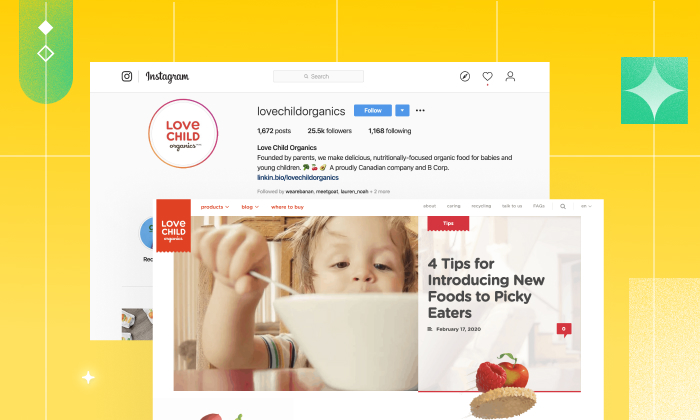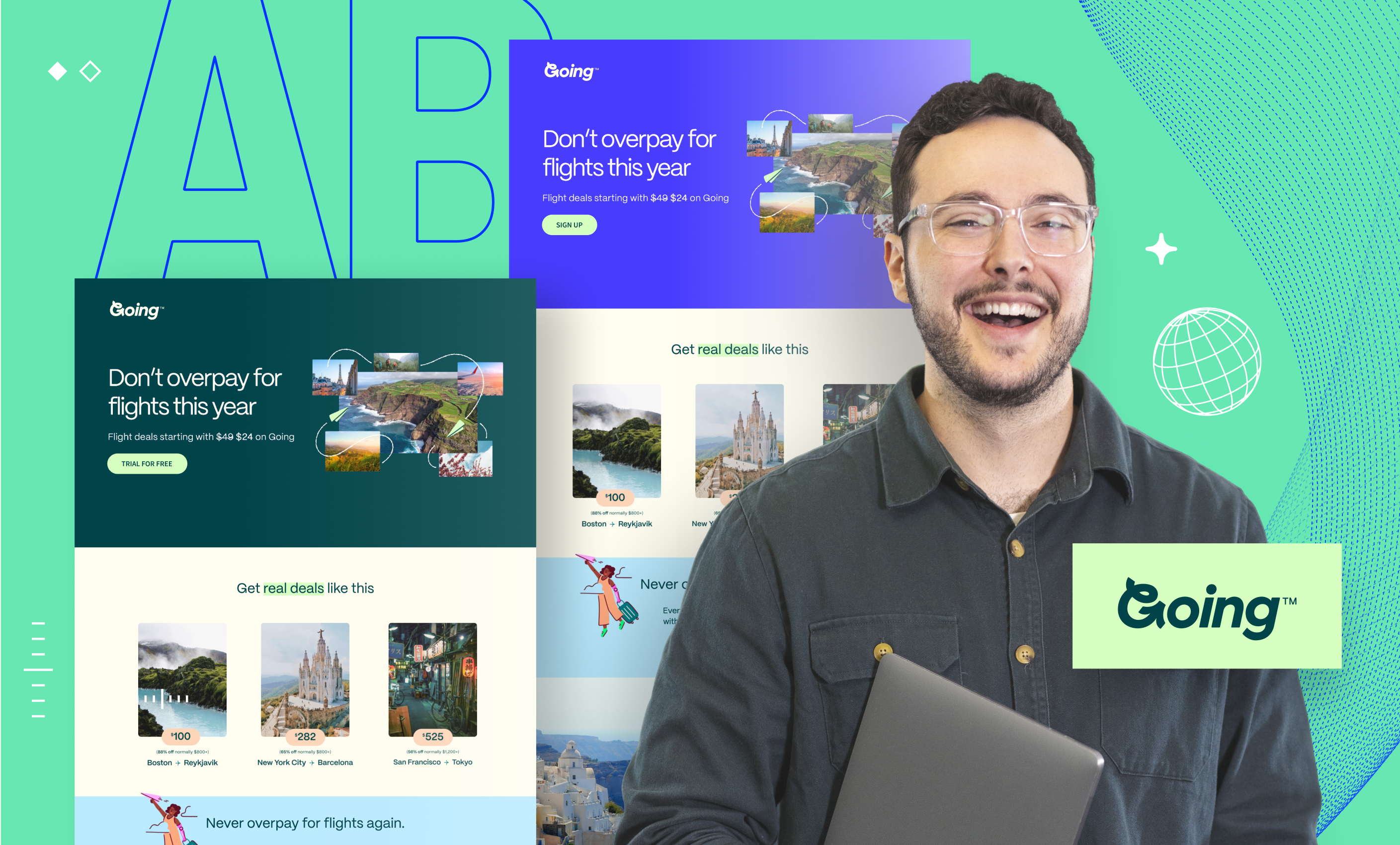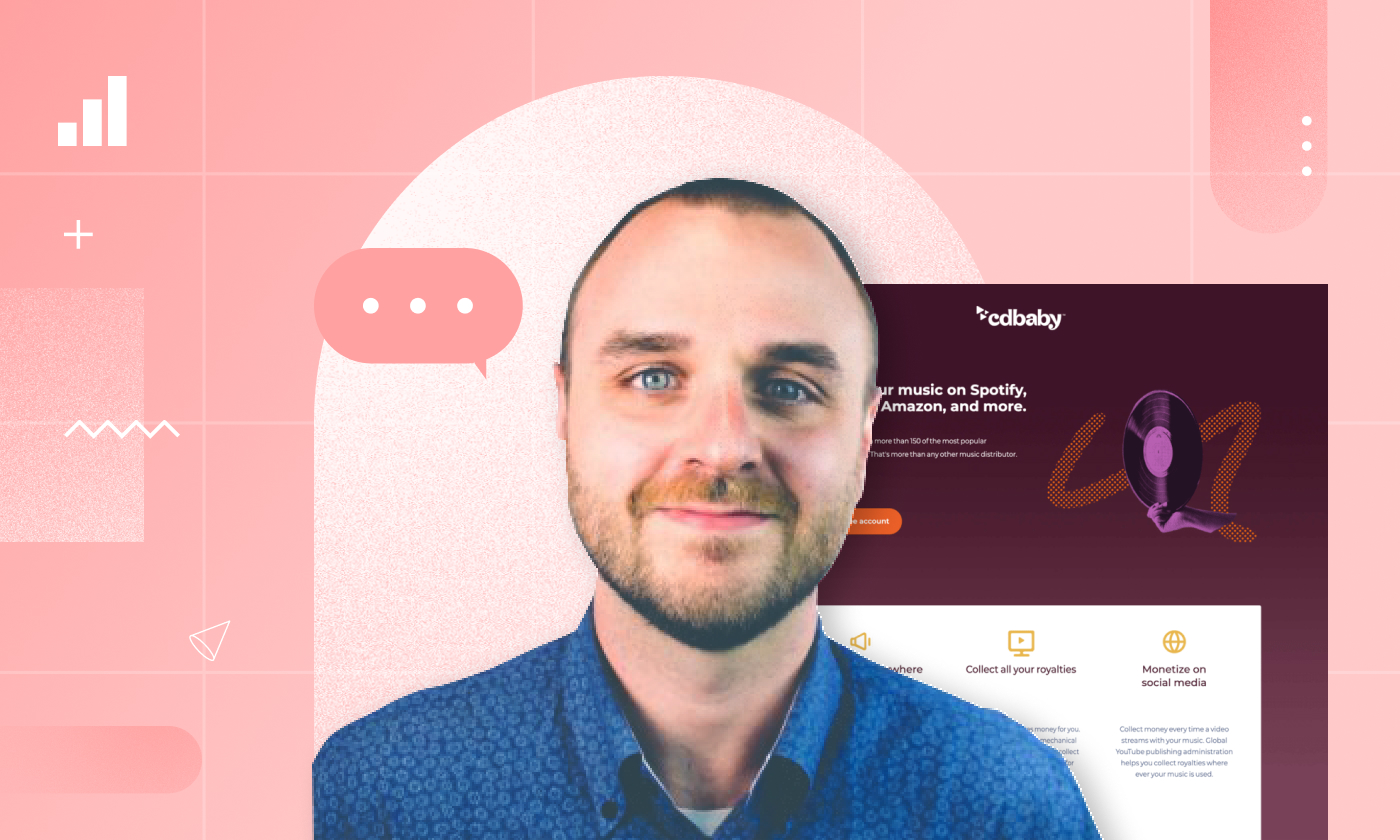Josh Gallant
Josh is the founder of Backstage SEO, an organic growth firm that helps SaaS companies capture demand. He’s a self-proclaimed spreadsheet nerd by day, volunteer soccer coach on weekends, and wannabe fantasy football expert every fall.
» More blog posts by Josh Gallant
What’s an email conversion rate?
The email conversion rate is the rate at which your subscribers convert in response to an email. You can calculate it by dividing the number of conversions by one of three numbers:
- The number of people you sent the email to
- The number of people who opened your email
- The number of people who clicked through your email
Your conversion rate will vary based on which of these numbers you choose to use since the pool of people you’re analyzing will change.
The right formula to find your email conversion rate will depend on which aspects of your email you want to analyze. For the subject line’s effectiveness, you might wanna check how many people who received the email converted. To help understand how your landing page affects conversion, you could calculate the rate at which people who clicked through converted.
The conversion you’re measuring doesn’t always have to be a purchase or subscription signup either. You could also examine how many people take an action that happens before purchasing, like downloading a resource.
What is a good email conversion rate?
The short answer is, “It depends.”
The long answer takes a little more unpacking.
First thing’s first, how you define your conversion rate will significantly impact what “good” actually means. For example, if you’re counting click-throughs from your email to a landing page as a conversion, a 2% conversion rate wouldn’t be the best. On the flip side, if you’re counting completed purchases of a $1,000 product as the conversion, that same 2% conversion rate would be spectacular.
According to MailChimp, a good email conversion rate will typically fall between 2% and 5% across all industries. If you’ve read our Conversion Benchmark Report, then you’ll notice this falls in line with the industry-wide median average landing page conversion rate of 4.3%.
All this is to say: What constitutes a “good” conversion rate will vary pretty significantly depending on the industry in question.
The businesses in some sectors have longer sales cycles, so their conversion rate will reflect that—think B2B SaaS companies in this case.
Others, like ecommerce or retail sites, would ideally have a higher conversion rate to reflect how they do business.
What is the average email conversion rate?
So now that we understand the ins and outs of what a good conversion rate is, let’s look at some industry benchmarks to determine what the average email conversion rate is across different industries and types of email.
It’s also important to note that conversion rate is often, but not always, synonymous with click-through rate. In the context of an email, the action you’re most often trying to get a user to take is to click through, so be aware that a lot of datasets like to use those terms interchangeably.
Average email conversion rate by industry
According to Campaign Monitor, the average email conversion rates and open rates of several key industries range from 17% to 30%.
Average email conversion rate by email type
The industry you serve isn’t the only benchmark to be aware of when it comes to email marketing. According to the same Campaign Monitor data, the average email conversion rates by email type range from 1% to 5%.
How to calculate your email conversion rate
Determining your email conversion rate is an easy process that follows the same principles as any other conversion rate. There’s an easy formula you can use to calculate it yourself:
(Number of conversions / Number of delivered emails) x 100 = Email conversion rate
Let’s use some quick napkin math as an example.
Say you’re running an email campaign for a sale on spring clothing styles. You send out 1,200 emails to promote this in a week, but 100 bounce back because they can’t be delivered to the addresses you have—so your number of delivered emails sits at 1,100. Great!
Of those 1,100, let’s say 250 take the desired action and convert.
If we punch this all into our formula, we get:
(250 / 1,100) x 100 = 22.7% conversion rate
That’s a pretty great conversion rate, even if it is just a hypothetical, especially compared to the benchmarks above.
How to increase your email conversion rate
Moving beyond the hypothetical, what steps can you take to increase your email conversion rates in real life?
Here are three ways to create more engaging emails that improve conversion rates:
1. Align your emails with your readers’ funnel stage
You’ve got to understand the journey your readers take to get to your emails to get conversions. This perspective will help you deliver emails that feel valuable and convincing.
How do you meet your subscribers where they are? Align your emails with your intended reader’s conversion funnel stage. On the path to conversion, a lead starts with no awareness of your brand and ends with a purchase.
When you know how the conversion funnel impacts your readers’ experiences, you can tweak your conversion goals and emails to match. For example, you shouldn’t ask customers at the top of the funnel who have little awareness of your brand to buy your product right away. Instead, your conversion goals and emails should focus on lighter commitments like blog post click-throughs.
Peep how Typeform engages new customers by asking them to join their user community. Since Typeform has a multi-tier subscription model, newly subscribed customers go through another conversion funnel that moves them toward higher tiers.
This email keeps its ask low pressure—visit Typeform’s online community—while offering help to new users who haven’t become ride-or-die Typeform fans yet. It provides upfront value before asking customers to consider a higher-tier Typeform plan.
This trick also works well for top-of-funnel leads who have yet to convert. Offer free knowledge, such as quick tips and downloadable resources, without asking your customer to buy something right away.
2. Write engaging copy that grabs your audience’s attention
Your subscribers signed up for your emails to read content that provides value and catches their attention. So, your copy has gotta go beyond those expectations to impress them.
Start with your email subject lines. After all, this line of text will affect whether people will open your emails in the first place. MailChimp recommends these best practices for kick-butt email subject lines:
- Use personalization fields to include your reader’s name
- Keep them short but descriptive
- Limit your punctuation and emoji use
Try A/B testing your subject lines if your email service provider offers the feature. It’ll show you what your audience, not just any audience, wants from your subject lines.
Tip: If you don’t have the right tools to test your email subject lines, try landing page A/B testing to test different landing page headlines and apply the winning variant to your subject line. (This approach also helps ensure you’re message matching i.e. making sure the messaging in your email matches what’s on your landing page.)
Now, it’s time to tackle your body copy. If you’re scratching your head wondering what to write, try an AI copywriting platform like Smart Copy.
Smart Copy has a few email-specific templates, but don’t be afraid to use a different template that describes your business or gives you a copywriting formula. For example, you could use the “Benefits” template to share what makes your company great or the “Pain Benefit Solution” template to pitch a product. Then, take the concepts the AI gives you and cut them down to the size of an email section.
Remember that AI copywriting is your first step to writing copy—not your last. Get some good ideas rolling and make them your own.
This email from The Hustle shows how much a human touch matters in email copywriting:
It starts with a goofy story to draw readers into the giveaway it advertises. How can you tell a story about your organization or product to hook readers on your email?
3. Wow your readers with social proof
Today’s customers need to know that people like them approve of your business before they’ll give it a chance. The average consumer needs to read 10 reviews before they can trust a company.
While you don’t have to add reviews to your email, you should start sprinkling social proof in them. Social proof is any proof that customers like your business, such as a testimonial, review, or social media post.
Some examples of social proof you can add to your emails include:
- Your products’ average star ratings
- Twitter or Instagram posts from customers who hype your product
- Logos of businesses that use your product
- Testimonials from happy customers
- Snippets of customer reviews
Look at how Bite sent an email totally focused on sharing social proof:
This email shows off reviews from the media and customers. The media reviews explain that people who know their stuff enjoy the product, while the customer reviews tell you that customers like you approve of it.
4. Build awesome, relevant landing pages
One of the best ways to enhance your email conversion rate? Match your emails with awesome landing pages.
Whenever a user clicks through on an email you’ve sent them, they’ll get sent to some kind of landing page.
Landing pages are a great way to optimize your conversion rate, and we could spend hours—days, even!—exploring all the ways you can use them.
We’ve touched on a few practices to follow already, but when in doubt, keep these best practices in mind to make the most out of your landing pages:
Match your messaging
The first thing you want to keep in mind is user experience. When a user clicks through, they want as smooth a transition from email to webpage as possible. That means that any offer or discount promoted in your email should be front and center on your landing page.
In short? Match your messages and keep things consistent.
Personalize the experience
It’s equally important that you find those opportunities to tailor and adjust your message to personalize things for your audience. Avoid the generic and really dig into those opportunities to make the most of your offerings—you could even employ some dynamic elements to automate the process.
Guide users to convert
The design and layout of your pages matters, too. Keep relevant offers above-the-fold, use eye-catching imagery, and guide visitors through to convert. While it may seem easier said than done, this work is incredibly valuable for maximizing your CRO efforts.
Remove distractions and friction
Great landing pages focus on a single offer, action, and outcome. If you have any elements on your landing pages that don’t contribute to that outcome, then you probably don’t need to include it.
This includes elements like site navigation, links to other pages, or even just unnecessary information that’ll slow folks down.
Need help building an awesome landing page? We’ve got you covered. Check out Unbounce’s drag-and-drop landing page builder to get started.
5. A/B test your efforts to optimize results
If you really want to boost your email conversion rate, then you’re going to have to put on your lab coat and start testing—don’t worry, though, you’re going to have a blast with this!
A/B testing, sometimes called split testing, is a sort of experiment marketers can run by comparing the results from two variants of a piece of content—in this case an email, but you’re just as likely to see folks running A/B tests on landing pages or ads.
You take your variants and show them to different segments of your audience, collecting data to determine which one performs best.
For an email, this is pretty straightforward: you split your mailing list and prep different copy to send to each segment. Whichever email leads to better results (such as CTR, open rate, and of course conversion rate) is the winner you can use for future testing and marketing.
The beauty of A/B testing is that it lets you make data-driven decisions. By comparing the performance of variant A against the performance of variant B, you can really drill into the elements that resonated with your audience. It could be that variant A’s got a catchier subject line, leading to more opens, or maybe variant B’s CTA drove that higher click-through rate.
Regardless of the results you gather, there’s no denying they’ll give you incredibly valuable insights into what’s working and what isn’t.
With all that in mind, though, A/B testing isn’t a one-and-done deal.
It’s an ongoing process that depends on continuous refinement to deliver success. Whatever findings you get from your tests will give you a new set of variables to compare, contrast, and put to work in continued support of your CRO efforts.
So, what exactly can you A/B test in email marketing? It’s actually a pretty impressive list:
- Subject line: This is the first and most obvious element to test. What subject line performs best? Sometimes putting an awesome stat first will lead to better results, sometimes you rely on words alone.
- Email length: There’s a time and place to really dig into a subject, and sometimes that means you stretch out and write something truly in-depth… but sometimes it means keeping things short and sweet. Experimenting with email length is a great factor to A/B test.
- Copy: Continuing on from that note about email length, experimenting with copy in general is probably one of the most intensive elements to test, simply because emails are so reliant on writing and messaging. Whether you’re playing with tone, structure, length, or other elements of language, the possibilities are almost endless.
- Personalized elements: There’s all sorts of opportunities to personalize email marketing campaigns. You could include dynamic elements that change depending on details you know about your audience, like geolocation, the channel they used to sign up for emails, or even the time of day you’re delivering your messages.
- Visuals: Not all emails will have visual elements—in fact, some of these design elements might get stripped out by your audience’s mail client—but that doesn’t mean you can’t try out different ideas.
- CTAs: The CTA is one of the best elements you can A/B test because it’s something you can really fine-tune to get results. Try out a few variations on your CTA to see what hits home.
To sum up, A/B testing in email marketing requires you to conduct mini-experiments to fine-tune your approach and maximize email effectiveness
It’s all about learning from your audience’s behavior to figure out what resonates and why and to put it to work moving forward.
Common email marketing mistakes that’ll tank your conversion rate
Email marketing is a huge topic to dig into, giving you a ton of new levers to pull on to fine-tune performance and success. But that also means it’s easy to make these common mistakes.
- Poor subject line copy—keep it concise, get personal, offer an incentive, and test.
- Lack of segmentation—make sure you’re delivering the right message to the right segment of your audience.
- Lack of automation—it goes without saying, but you want your emails to send based on preset triggers to maximize effort and reach.
- Lazy list management—keep your mailing list up-to-date by regularly removing any email addresses that bounce your messages back, and make sure you’re collecting relevant data.
- Poor deliverability and engagement—if your messages are going to disinterested users, you’re not getting the most out of your email marketing. Consider extra opt-in steps, mailing list confirmation, and regularly checking in with your audience to keep them interested.
Wherever you are with your email marketing efforts, keep these 57 common email marketing mistakes in mind.







![[Build – MOFU] Email Use Case Page – V1](https://unbounce.com/photos/Frame-25@2x.png)




